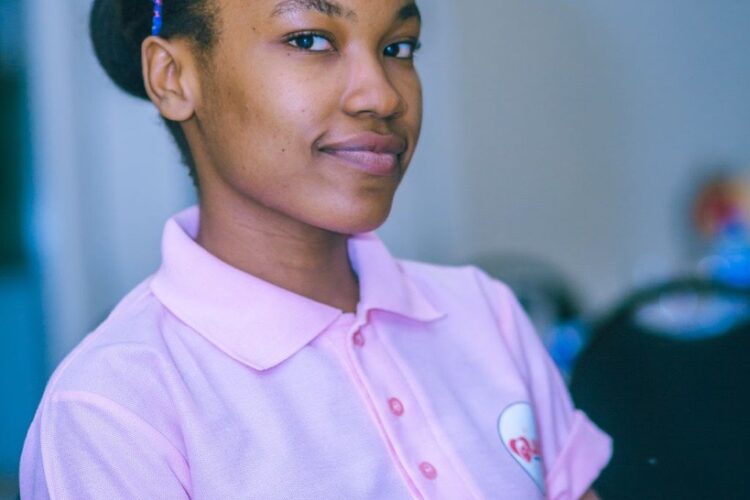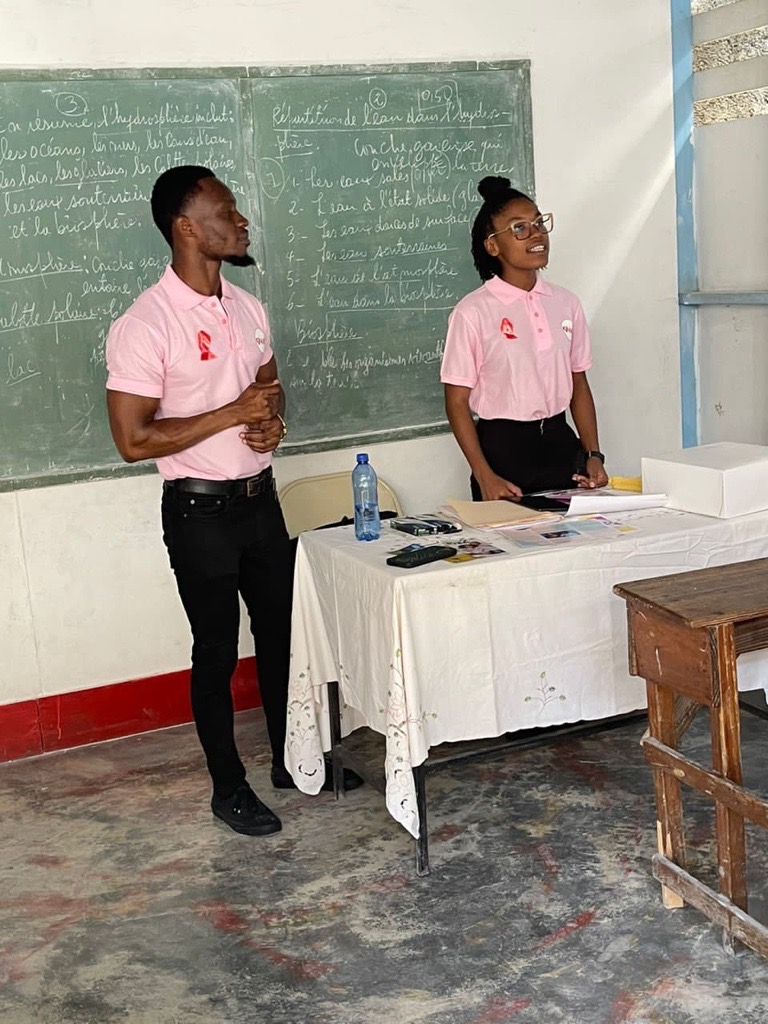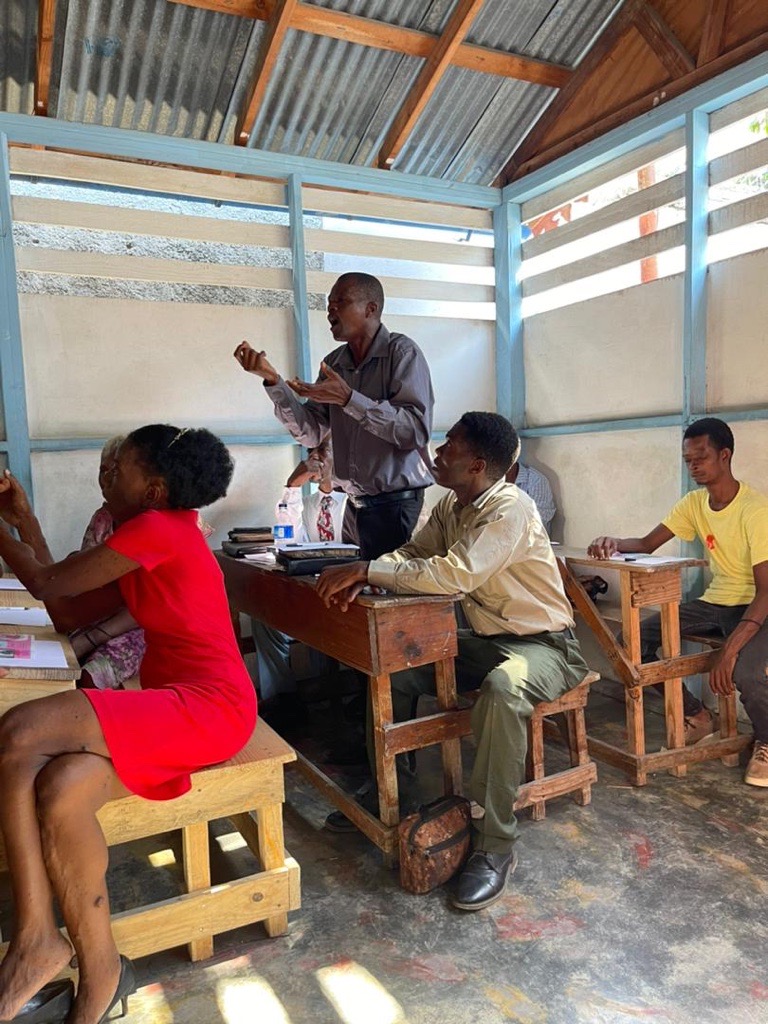A Voice for the Voiceless: Midwifery and Sign Language in Haiti

Sneïka Anna Lora Synal is a Haitian student midwife in her final year and a sign language interpreter. As part of the first cohort of the Association des Sages-Femmes d’Haïti (ASFH) Young Midwife Leader Program, her individual project focused on creating sexual and reproductive health awareness and education activities for people who are deaf or hard of hearing. She was inspired by the lack of access to reliable sexual and reproductive health information in Haiti. Since she is fortunate to speak sign language, she has made a special effort to support hearing-impaired and pregnant women by providing them with care adapted to their needs.
Learn more about why she started this initiative and how she is making a difference through the following questions and answers.
What inspired you to learn American Sign Language (ASL) as a midwife?
 I was inspired by a fellow midwife who also speaks sign language. During one of our placements, we encountered a pregnant woman in labor who was becoming agitated, but no one could understand what she was trying to communicate. The other caregivers assumed she was simply irritated and unwilling to cooperate. Then my colleague arrived and spoke to her in sign language, revealing that her distress was due to an issue with her venous line, which was quickly resolved. That experience made me realise how essential it is to establish a more inclusive system of care. It was inconceivable to me that a maternity ward had no way to communicate with people who are hard of hearing. So, in my second year studying midwifery, I decided to learn sign language.
I was inspired by a fellow midwife who also speaks sign language. During one of our placements, we encountered a pregnant woman in labor who was becoming agitated, but no one could understand what she was trying to communicate. The other caregivers assumed she was simply irritated and unwilling to cooperate. Then my colleague arrived and spoke to her in sign language, revealing that her distress was due to an issue with her venous line, which was quickly resolved. That experience made me realise how essential it is to establish a more inclusive system of care. It was inconceivable to me that a maternity ward had no way to communicate with people who are hard of hearing. So, in my second year studying midwifery, I decided to learn sign language.
How has your knowledge of ASL shaped your approach to midwifery?
Learning ASL has been incredibly beneficial to my work. During my training, I have encountered several pregnant women who are hard of hearing, and being able to communicate with them has been invaluable. It allows me to provide care without barriers and ensure they fully understand medical procedures. Many deaf or hearing-impaired women are hesitant to accept certain medical techniques, such as vaginal exams, intravenous medication administration, or the use of a speculum, mostly because they are not given enough information in a way they can understand. Being able to explain these procedures in their language helps build trust and makes them feel more comfortable. Additionally, my experience with sign language has heightened my awareness of body language, allowing me to recognise deaf patients more quickly based on their gestures.
What motivated you to create videos on sexual and reproductive health and rights (SRHR) for the hearing-impaired community? Can you tell us about the impact of these videos and the feedback you’ve received?
 When I was learning sign language, I noticed something interesting. Our teachers often assigned us homework to complete in sign language, and because of my medical background, I naturally chose to present topics related to health. I quickly realised that my instructors were more captivated by the information I was sharing than by my signing skills. They asked many questions about topics like blood donation, HIV, and sexually transmitted infections. This made me realise how much this community lacked access to essential health information, particularly regarding sexual and reproductive health.
When I was learning sign language, I noticed something interesting. Our teachers often assigned us homework to complete in sign language, and because of my medical background, I naturally chose to present topics related to health. I quickly realised that my instructors were more captivated by the information I was sharing than by my signing skills. They asked many questions about topics like blood donation, HIV, and sexually transmitted infections. This made me realise how much this community lacked access to essential health information, particularly regarding sexual and reproductive health.
Through the first Young Midwife Leader (YML) cohort of the Association des Sages-Femmes d’Haïti (ASFH), I had the opportunity to record and share educational videos on sexual and reproductive health in sign language touching specific topics such as Gender Based Violence, Sexually Transmitted Infections, Comprehensive Abortion Care, Family Planning, Pregnancy and the midwifery profession. These videos were posted on the association’s YouTube channel to reach as many people as possible. The response has been overwhelmingly positive, with many viewers expressing their appreciation for receiving information in a language they understand.
What challenges have you faced in advocating for inclusivity in healthcare, and how have you overcome them?
 One of my biggest challenges was securing institutional support for my project. Initially, I approached specialised schools that serve the hearing-impaired community, but I encountered resistance because sexual and reproductive health remains a taboo subject in Haiti, especially within educational settings. To navigate this challenge, I turned to other institutions deeply embedded in the community, such as churches, where I found more openness to discussing these topics.
One of my biggest challenges was securing institutional support for my project. Initially, I approached specialised schools that serve the hearing-impaired community, but I encountered resistance because sexual and reproductive health remains a taboo subject in Haiti, especially within educational settings. To navigate this challenge, I turned to other institutions deeply embedded in the community, such as churches, where I found more openness to discussing these topics.
Another challenge is that hearing-impaired individuals are not always easy to identify because their disability is not visibly apparent. Community outreach was essential to locate and engage them, ensuring they could access the education and support they needed.
How do you see midwives playing a larger role in supporting individuals living with disabilities?
Currently, healthcare institutions are not adequately equipped to provide inclusive care for individuals with disabilities. Most facilities lack the infrastructure to accommodate people with sensory and physical impairments. For example, delivery tables are not designed for pregnant women with limb differences. While midwives themselves may have limited control over institutional changes, advocacy is crucial. We need to push for awareness and policy reforms that ensure maternity wards are better adapted to accommodate all women, regardless of their abilities.
What are your hopes for the future of midwifery in Haiti, particularly in terms of inclusivity and accessibility?
I hope to see more health professionals, especially midwives, actively engaged in promoting inclusive care. Learning sign language, even at a basic level, could significantly improve communication with hearing-impaired patients. Midwifery is built on a holistic approach, where establishing trust and providing compassionate care are fundamental. However, this is not always the experience of hearing-impaired pregnant women. I would love to see every maternity unit have at least one staff member who can communicate in sign language and for healthcare facilities to improve their infrastructure to be more inclusive and accessible.
If you could share one message with midwives globally about inclusivity in care, what would it be?
Providing truly inclusive healthcare comes with many challenges, but change can start on a small scale, with you! Do not wait for the system to take action before you do. You are the leaders of change, and together, we can create a stronger, more inclusive healthcare system. Now is the time to turn advocacy into action to build a better future for our pregnant women.